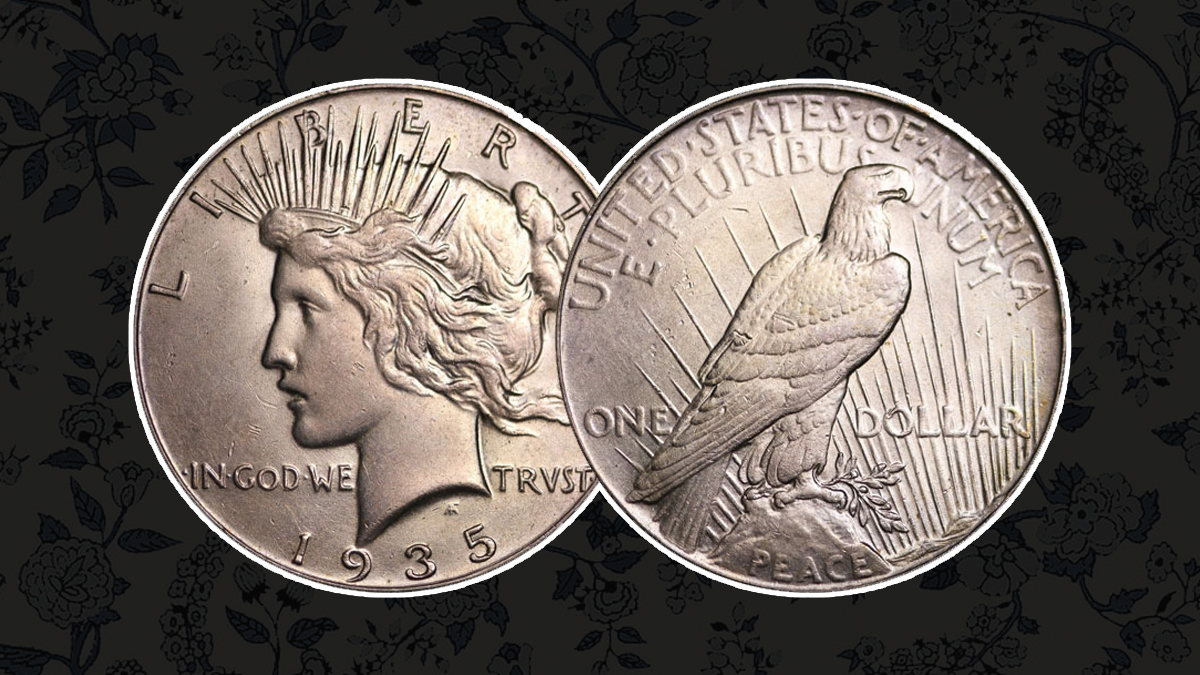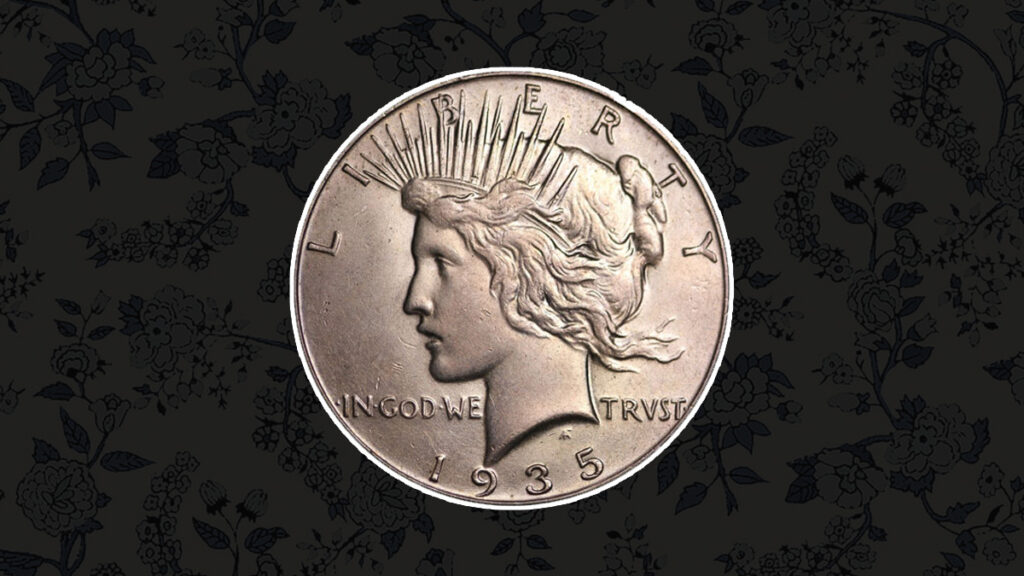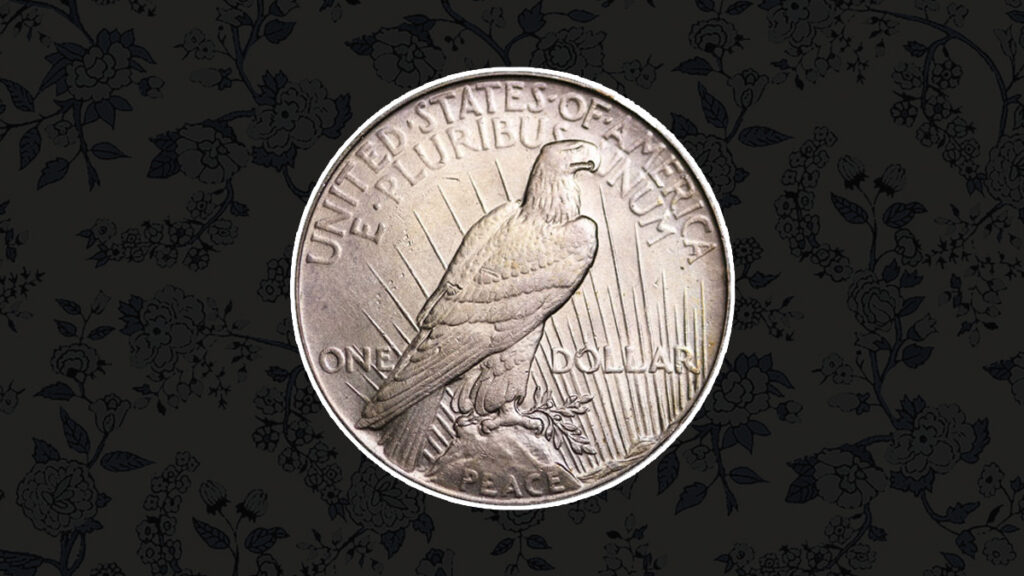
The 1935-S Peace Dollar was the San Francisco Mint’s last silver dollar to be struck for circulation. Although there were more than 400,000 more coins minted overall (1,964,000) than the Philadelphia issue of the same year, the San Francisco edition is thought to be rarer throughout the board.
The Peace Dollar is a U.S. coin minted for circulation from 1921 to 1928, 1934 to 1935, and again for collectors starting in 2021. The peace dollars were designed by Anthony de Francisci and represent peace, featuring the Goddess of Liberty on the obverse and a bald eagle clutching an olive branch with the word “Peace” on the reverse. It was the final silver dollar minted for circulation.
The coin was created following the Pittman Act of 1918, which required millions of silver dollars to be minted. Initially, Morgan dollars were used, but after World War I, numismatists pushed for a new design to celebrate peace. Although Congress didn’t mandate the redesign, Treasury Secretary Andrew Mellon approved it in December 1921. The first Peace Dollars were produced on December 28, 1921.
The design originally included a broken sword, but public backlash led to its removal. Production stopped in 1928 when Pittman Act requirements were met but resumed in 1934–1935 due to new legislation. In 1965, 316,000 Peace Dollars dated 1964 were minted but melted due to controversy. In 2021, the U.S. Mint reissued the Peace Dollar for its 100th anniversary, with continued production from 2023.
History of 1935 Peace Dollar
The Bland–Allison Act of 1878 required the U.S. Treasury to buy at least $2 million in domestic silver monthly and mint it into silver dollars. As a result, the United States was able to melt up to 350 million dollars value of silver and sell it to Britain for $1 an ounce. Morgan. Many of these coins were stored in bank vaults as backing for silver certificates. The Sherman Silver Purchase Act of 1890 increased silver purchases, but after its repeal in 1893, silver dollar production ended in 1904 once the remaining silver was used.
During World War I, Germany spread rumors that Britain couldn’t back its paper currency with silver, causing silver prices to rise. Congress passed the Pittman Act in 1918 to stabilize the market and help the British war effort. It allowed the U.S. to melt up to 350 million silver dollars for sale at $1 per ounce to Britain. Of this, 270,232,722 coins—47% of all Morgan Dollars—were melted. The Act also needed the minting of new silver dollars from American-mined silver to replace the melted coins.
Coin Specifications
Series: Peace Dollars 1921-1935
Country: United States of America
Year of Issue: 1935
Denomination: One Dollar (USD)
Mintmark: S (San Francisco)
Mintage: 1,964,000
Alloy: .900 Silver, .100 copper
Weight: 26.73 g
Diameter: 38.10 mm
Edge: Reeded
Features of the 1935 Peace Dollar
The 1935 Peace Dollar, the last year that silver dollars were minted, is famous and continues to be very common. It is a superb type of coin issue with superb luster and strike. All grades, up to the gem grade, are common and reasonable; MS66 is rare, and any finer grade is regarded as a condition rarity.
Obverse

A portrait of a crowned Liberty with the word “Liberty” along the top of the coin. On the right side of Liberty’s neck is written the phrase TRUST, and to the left is IN GOD WE. The year is centered at the bottom.
Reverse

On the reverse side an eagle is perched on a rock facing right, with the phrase E Pluribus Unum and the United States of America at the upper edge. The left side and right of the eagle’s tail show the one dollar bill and the l with the word PEACE written at the bottom. If there is a mintmark, it’s visible on the left side under the word ONE.
Value of 1935 Peace Silver Dollar
This Philadelphia issue has been described as a fairly common date. Many coins had been stored in vaults in banks and were introduced to the market quietly over a long period. You may easily find the 1935 Peace dollar in uncirculated condition. Collectors are advised to use care and selectivity because strike and luster quality vary widely. There is always a high demand for well-struck examples with a good shine.
1935 Peace Dollars Are Often Found in the Common Domain: It is also rare to find this date in huge numbers of Peace dollars. It should be easy to find an EF or AU example if you’re looking for one.
Bottom Line:
The 1935 Peace Dollar has a unique place in U.S. coin history as the final silver dollar minted for circulation. It continues to attract coin enthusiasts with its elegant design, historical value, and collectible nature. While the 1935-S Peace Dollar is rarer than its Philadelphia counterpart, both remain accessible to collectors in varying conditions. Whether you’re looking for an EF or AU example or even an uncirculated piece, these coins are widely available but require careful selection for quality. The 1935 Peace Dollar remains a valuable and meaningful addition to any collection, embodying the spirit of peace and the legacy of U.S. silver coinage.
